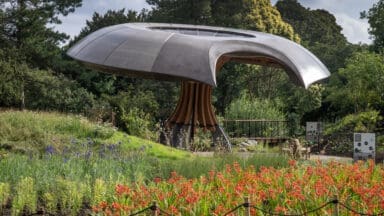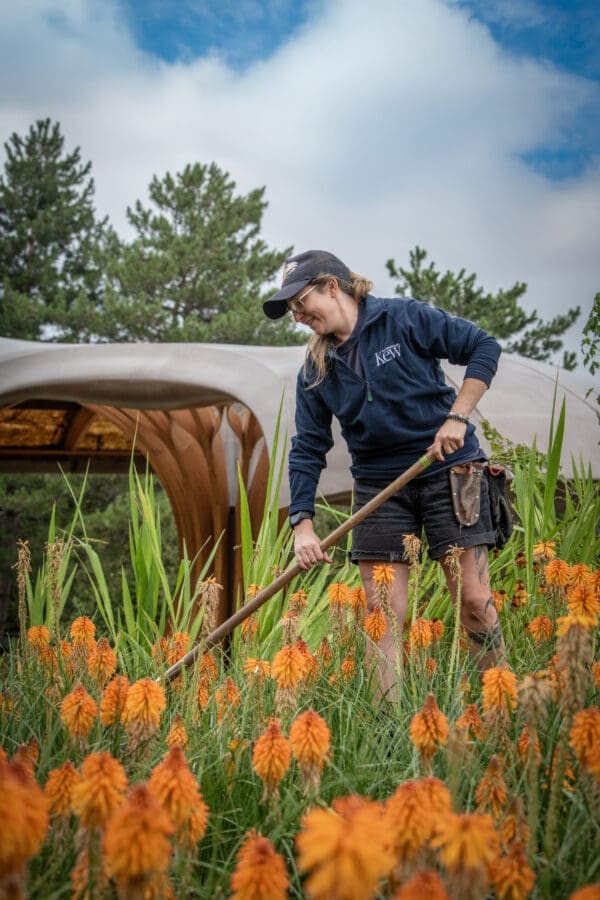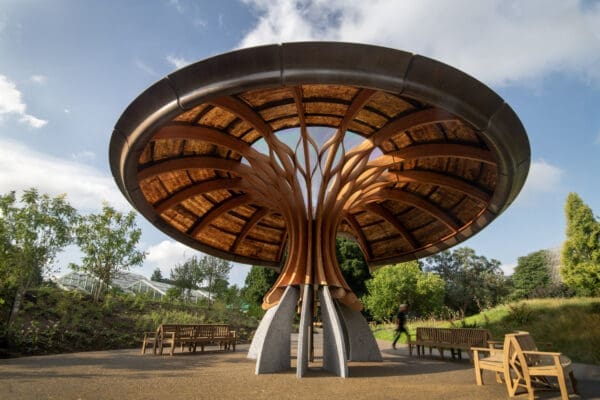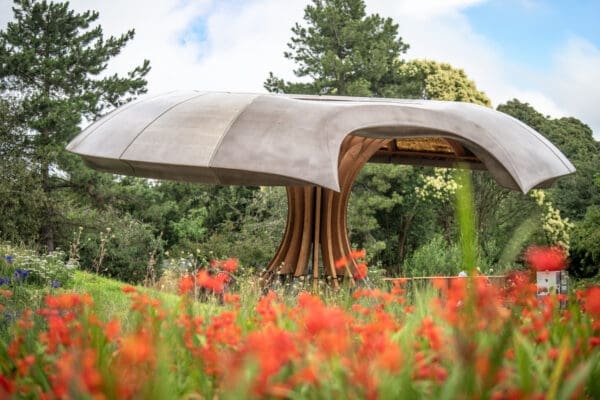
The new permanent garden at the Royal Botanic Gardens, Kew, the Carbon Garden highlights the critical role carbon plays in sustaining life on Earth, the scale of the climate crisis, and the extraordinary potential of plants and fungi to combat it.
Planted with over 6,000 plants and 35 trees originating from the Mediterranean, South Africa and California, along with native species that cope with hotter temperatures, the new garden is an (experimental) demonstration of a garden for the drought-prone climate, scientists predict of the next decades. With their new garden, Kew hopes to inspire to act for nature, highlighting daily actions that can be taken to support the health of plants and the planet.
“The Carbon Garden offers a unique opportunity to showcase our ongoing research, combining scientific insight with thoughtful design and beautiful planting to highlight the role of carbon in our lives, how it moves through the environment and how plants and fungi can help us tackle climate change,” explains Richard Wilford, designer of the Carbon Garden and Manager of Garden Design at RBG Kew.
Carbon Garden design
Central to the design is the symbolic fungal fruiting body pavilion designed by Mizzi Studio. Inspired by the symbiotic relationship between plants and fungi, the materials and structure have been modelled on biological processes, and the pavilion has been created using natural materials. A forward-tilted canopy directs rainwater into the rain garden, and the sheltered space will support school visits and community activities.
The garden is divided into three main areas: a depiction of a graphic chart of the Earth’s rising temperatures; a dry garden; and rain garden.
Inspired by climate stripes (Professor Ed Hawkins, University of Reading in 2018) a collection of herbaceous perennials, such as Achillea ‘Moonshine’, ‘Paprika’ and ‘Red Velvet’, and Hydrangea serrata ‘Bluebird’, show how global average temperatures have risen over time. An exposed coal seam showing fossilised plants, highlights the connection between plants and fossil fuels.
The dry garden showcases ways to work with plants to adapt to a changing climate. Drought-tolerant plants such as Parry’s agave (Agave parryi) and lavendar dominate, illustrative of the plants we might look to for London gardens in 30 years.



Thirty-five new trees, chosen for their resilience to anticipated future climate conditions, exemplify nature’s remarkable capacity to sequester and store carbon. Species such as Persian Ironwood, Oriental Hornbeam, and Japanese Elm, adept at managing both hot, arid summers and wet, damp winters, illustrate how trees can contribute to the adaptation of urban areas to climate change.
The rain garden illustrates ways we can manage water flow, prevent soil erosion, reduce flooding, recharge moisture into the soil and support moisture-tolerant plants that maintain soil stability and carbon storage. Grasslands, wildflower meadows and native hedgerows will boost biodiversity and lock in carbon, as biodiverse habitats are more resilient and better at storing carbon than monocultures.
The Carbon Garden was funded by the Biffa Award through the Landfill Communities Fund, the People’s Postcode Lottery, and donations.
Rachel Maidment, Biffa Award Grants Manager, added: “We are immensely proud to support the Carbon Garden, which will educate and inspire visitors about the vital role of carbon in our environment. Through the Landfill Communities Fund, we are committed to funding projects that have a lasting positive impact on both people and the planet. We are particularly excited that this garden will not only showcase Kew’s research but will also serve as a hub for learning, demonstrating how collective action can drive real environmental change. Biffa Award is honoured to play a role in bringing this vision to life.”

